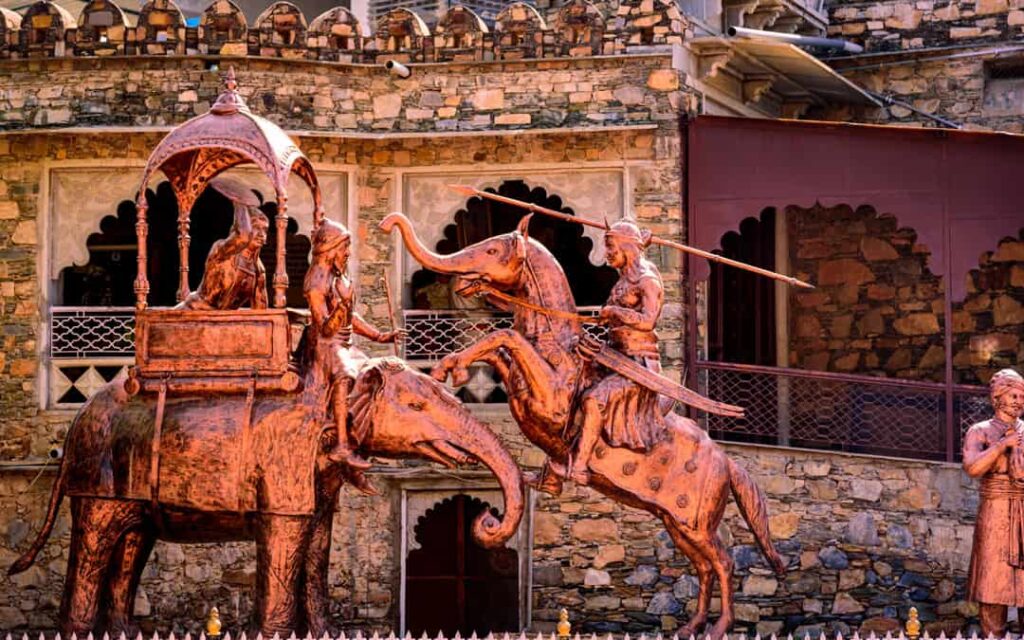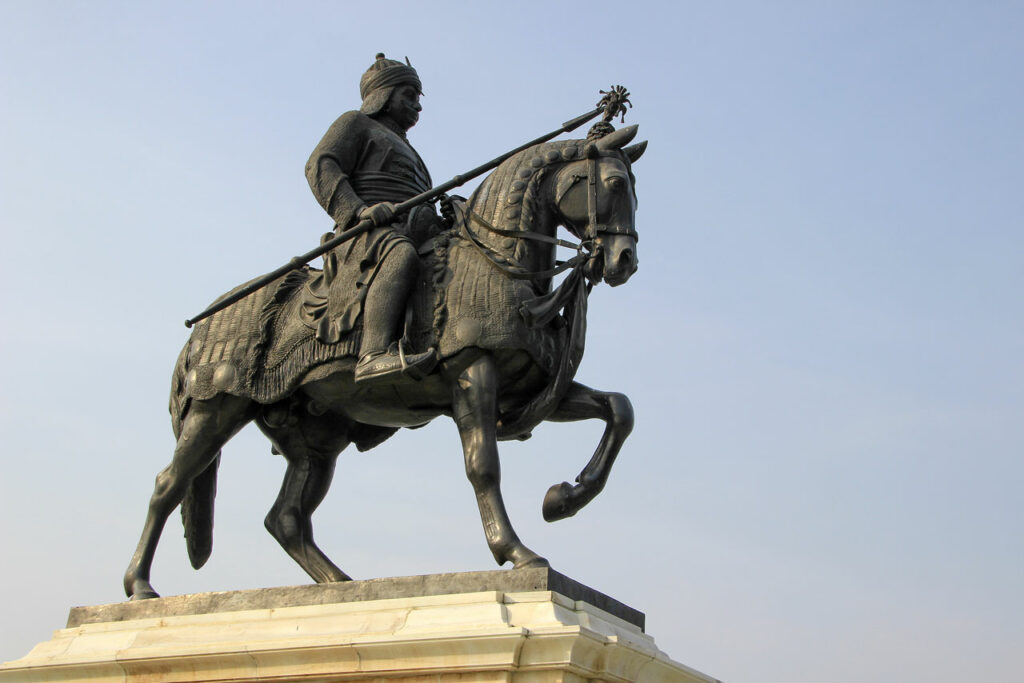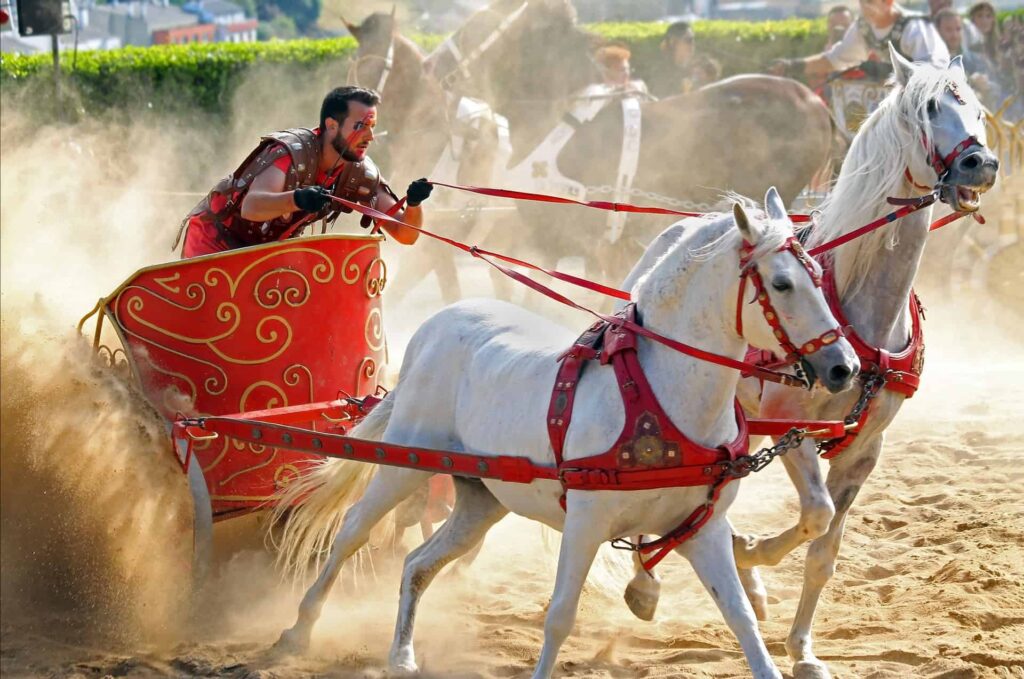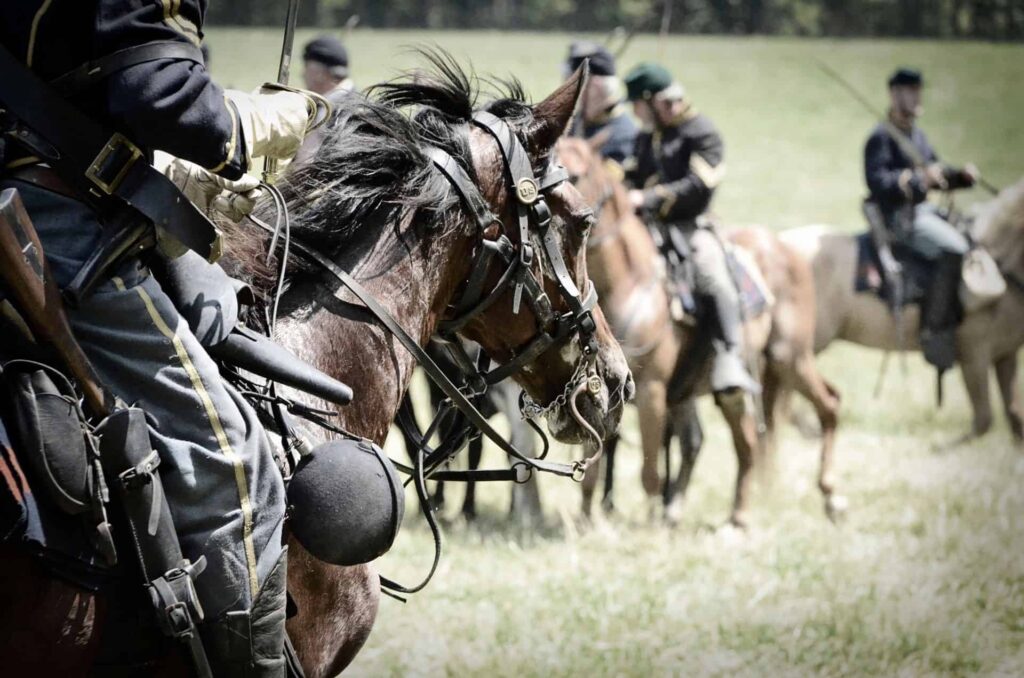Chetak, known as the Blue Horse of Maharana Pratap, was a legendary Marwari horse in Indian history. Known for its loyalty, speed, and bravery, Chetak played a crucial role in the Battle of Haldighati in 1576, where it saved its master, Maharana Pratap, from the clutches of the Mughal army. Chetak’s contributions have been immortalized in ballads and legends, symbolizing courage and loyalty in the face of adversity.
The historical context of Chetak can be traced back to the tumultuous era when the Mughal empire was attempting to expand its reign into the region of Rajasthan. Maharana Pratap, the ruler of Mewar, valiantly resisted the invasion, famously leading his troops into the Battle of Haldighati against the Mughal forces led by Akbar. It was in this battle that Chetak’s bravery and loyalty came to the forefront, ultimately leading to the horse’s tragic demise due to its battle-inflicted injuries.
Key Takeaways
- Chetak was a legendary Marwari horse known for its loyalty and bravery during the Battle of Haldighati.
- The horse saved its master, Maharana Pratap, from the Mughal army in their bid to conquer Rajasthan.
- Chetak’s legacy has been immortalized in ballads, statues, and is a symbol of courage and loyalty in Indian history.
The Blue Horse of Maharana Pratap
Chetak, often referred to as the “blue horse” or “neela ghoda”, was the famous war horse of Maharana Pratap, a valiant Rajput king from Mewar, India. This exceptional horse was renowned for its speed, intelligence, and loyalty to its rider, Maharana Pratap.
It is believed that Chetak played a significant role during the Battle of Haldighati which took place on June 18, 1576. In this epic battle, Maharana Pratap and his brave soldiers faced the mighty forces of Emperor Akbar, led by Man Singh I of Amer. Despite being heavily outnumbered, the Mewar king’s army put up a fierce fight, with Chetak’s presence adding to their courage and determination.
Some of the remarkable feats attributed to Chetak during the battle are:
- Endurance: Chetak carried Maharana Pratap through the treacherous terrain of the Aravalli Mountains, maintaining remarkable speed and stamina throughout the battle.
- Intelligence: The horse was known to have saved its rider from a lethal elephant attack by leaping over a wide chasm, displaying immense bravery and quick thinking.
- Loyalty: Despite being gravely injured during the battle, Chetak continued to carry Maharana Pratap away from the battlefield, ultimately succumbing to its wounds after ensuring the safety of its rider .
Chetak’s legacy has been immortalized in various forms of literature and art, with numerous poems, ballads, and paintings depicting the horse alongside its equally rider. For instance, Chetak was first named in an eighteenth-century ballad called “Khummana-Raso”. Today, Chetak remains a symbol of bravery, loyalty, and the unwavering bond between a warrior and his steed in the history of Mewar and India.
Historical Context
Chetak holds a significant place in the history of Mewar, a region located in the present-day state of Rajasthan, India. The valiant stallion is revered for its unwavering loyalty and courage in assisting its owner, King Maharana Pratap, during the arduous Battle of Haldighati in 1576.
The conflict ensued between King Maharana Pratap, the ruler of Mewar, and the Mughal Emperor Akbar. The primary objective of this pivotal battle was to maintain the sovereignty of Mewar, which was under threat from the expanding Mughal Empire. King Maharana Pratap commanded his army consisting of Rajput warriors, while the Mughal army was led by Emperor Akbar’s trusted general, Man Singh.
Although Maharana Pratap’s forces were heavily outnumbered by the Mughal army, Chetak played a crucial role in assisting his rider during the fierce battle, displaying incredible agility, speed, and intelligence. Despite being severely wounded, Chetak carried Maharana Pratap to safety, embodying the resilience and loyalty for which he is still admired today.
In memory of Chetak’s remarkable feats, a memorial was built at the site where the horse succumbed to its injuries. Called the Chetak Smarak, the monument commemorates this iconic steed and serves as an emblem of the extraordinary loyalty and bravery displayed by both the horse and its rider during one of the most significant battles in Indian history.
Chetak’s tale of heroism continues to be retold and celebrated in the local folklore of Rajasthan and throughout India. The legacy of this magnificent horse serves as a lasting reminder of the fearless spirit of not only Chetak but also King Maharana Pratap and his indomitable determination to protect the sovereignty of Mewar from the powerful Mughal Empire.
The Battle of Haldighati
The Battle of Haldighati took place on June 18, 1576. Maharana Pratap led the Mewar forces, whereas Man Singh I of Amber commanded the Mughal forces. This well-known battle occurred at Haldighati in the Aravalli Mountains of Rajasthan, western India.
At the start of the battle, both armies faced each other, with Maharana Pratap riding his cherished horse, Chetak. Chetak, a powerful and well-trained battle horse, played a crucial role in the events that unfolded.
The two armies clashed violently, with warriors wielding a variety of weapons such as lances, swords, and bows. Maharana Pratap, atop Chetak, engaged in combat against Man Singh I, who was riding an elephant. At one point during the battle, Chetak made a daring leap, jumping up and placing its front legs on the elephant’s trunk. This courageous act allowed Maharana Pratap to unleash his lance, striking the elephant’s driver.
The fighting continued for about four hours before the Mewar forces began to retreat. Despite the ferocious battle, Chetak remained loyal and steadfast, carrying Maharana Pratap away from the battlefield to ensure his safety.
In the aftermath of the battle, Chetak eventually succumbed to its injuries. A memorial was later built in remembrance of the heroic horse and its unwavering dedication to its rider.
The Battle of Haldighati highlighted the courage and resilience of both Chetak and Maharana Pratap. It remains an important event in the history of Mewar and a testament to the strong bond between a warrior and his trusted steed.
Chetak’s Loyalty and Bravery
Chetak, Maharana Pratap’s horse, was known for its exceptional loyalty and bravery on the battlefield. This incredible horse unquestionably stood by its master in numerous battles, including the famous Battle of Haldighati. Throughout history, Chetak’s loyalty and courage have become synonymous with the values of its rider, Maharana Pratap.
Various instances highlight Chetak’s extraordinary characteristics. For example, during the Battle of Haldighati, Chetak displayed remarkable strength and resilience while carrying Maharana Pratap through the battlefield, even amidst dire situations. Chetak’s unwavering commitment to protect its master further exemplifies the bond shared between the warrior and his steed.
Not only was Chetak known for its loyalty but also its remarkable bravery. In the face of certain danger, this horse demonstrated exceptional courage, fighting alongside its master to resist enemy forces. Chetak’s actions are still admired today, serving as an inspiration for the importance of loyalty and bravery in the face of adversity.
Beyond its loyalty and bravery, Chetak showcased tremendous strength and resistance throughout its life. As a member of Maharana Pratap’s army, this horse underwent rigorous training to become a resilient and steadfast companion during wars. Chetak’s incredible endurance and ability to withstand harsh conditions made it an invaluable asset to Maharana Pratap and his kingdom.
Chetak’s unwavering loyalty, incredible bravery, commendable strength, and indisputable resistance greatly contributed to Maharana Pratap’s successes on the battlefield. The horse’s qualities continue to serve as a symbol of devotion, valor, and courage in Indian folklore and history.
Legends and Ballads
The horse, Chetak, is celebrated in various legends and ballads throughout Indian history, particularly in Rajasthan. Chetak was the loyal steed of Maharana Pratap, a Rajput king who fought against the Mughals. The horse’s loyalty and bravery, particularly in the historic Battle of Haldighati, have been immortalized in the poems and stories that continue to be told across generations.
An important ballad, the Khummana-Raso, is an eighteenth-century work that first named the horse Chetak. In this ballad, Chetak’s heroic exploits were sung, praising its remarkable strength and ability to protect its rider, Maharana Pratap, during times of danger. The Khummana-Raso shares awe-inspiring accounts of the bond between horse and rider, emphasizing the importance of teamwork and trust in Indian history.
Another fascinating work is the Chetak Ki Veerta, a poem that highlights Chetak’s bravery and unwavering loyalty to Maharana Pratap. The poem narrates accounts of Chetak’s conscious efforts to protect its master in the heat of battle, proving its immense reverence for the king. The poem describes how even during challenging times, Chetak’s steadfast dedication allowed it to overpower enemies and persevere through adversity.
Some common elements found in these ballads include:
- Chetak’s unmatched loyalty to Maharana Pratap
- The horse’s exceptional strength and resilience
- The historic Battle of Haldighati and Chetak’s role in it
- The deep bond between Chetak and its rider
Chetak’s feats have not only been preserved through oral traditions but also through monuments and memorials. For instance, a monument was erected in Haldighati by Maharana Pratap to honor his beloved horse after its death in battle. The memory of Chetak, often referred to as the “Blue Horse,” lives on through the tales that resonate across India.
The legends and ballads of Chetak commemorate the extraordinary loyalty, bravery, and connection between the horse and its rider, Maharana Pratap. Through works like the Khummana-Raso and Chetak Ki Veerta, the epic tales of Chetak continue to inspire generations and are a testament to the indomitable spirit and rich cultural history of India.
Chetak’s Memorial and Statues
Chetak, the famed steed of Maharana Pratap, is honored with memorials and statues across Rajasthan. One such memorial, known as Chetak Smarak or Chetak Samadhi, commemorates the spot where Chetak died from his battle wounds after helping Maharana Pratap escape the Battle of Haldighati. This monument holds significant historical importance, celebrating the brave and devoted spirit of the horse.
In addition to the Chetak Smarak, there are several statues in honor of Chetak. These equestrian statues depict the bond between Maharana Pratap and Chetak. Notably, Chetak’s statue stands proudly at Moti Magri Park, a popular tourist destination in Udaipur. Another prominent statue, erected to honor Chetak’s bravery and loyalty, is located at Chetak Circle.
Some key features of these statues and memorials include:
- Equestrian statues: Chetak is often depicted carrying Maharana Pratap on his back, showcasing the bond and partnership between the two.
- Monument of national importance: The Chetak Smarak is considered a monument of national importance, reflecting Chetak’s unwavering bravery and dedication.
- Chetak Circle: This area in Udaipur City showcases a statue of Chetak as an enduring symbol of pride and loyalty.
These memorials and statues serve as a reminder of Chetak’s integral role in India’s history, highlighting the tale of courage and friendship between the valiant steed and his master, Maharana Pratap.

Literature and References
Various historical accounts and literary references describe the tale of Chetak, Maharana Pratap’s horse, and his role in the Battle of Haldighati. Chetak has been a prominent figure in Indian folklore, showcasing the bond between a warrior and his horse.
One of the earliest descriptions of Chetak is found in the writings of Lieutenant-Colonel James Tod, a British officer and historian. In his monumental work, Annals and Antiquities of Rajasthan, Tod narrates various accounts of Rajasthani historical figures, including Maharana Pratap and Chetak.
According to historical records, Chetak was not just a valiant warhorse but also Maharana Pratap’s close companion. The horse is said to have been instrumental in protecting his master during the Battle of Haldighati against Akbar’s forces. Chetak’s fearlessness and unwavering loyalty to Maharana Pratap are still remembered and celebrated in regional folklore.
In terms of appearance, some accounts suggest that Chetak might have been a Grullo-colored stallion or possibly grey. While depictions of Chetak’s physical traits have varied, the lasting image of this courageous horse has transcended time and geography.
Today, the legend of Chetak and Maharana Pratap continues to inspire awe through various art forms, literature, and monuments such as the commemorative statue in Moti Magri Park, Udaipur. The valor of Chetak and his bond with Maharana Pratap remains an enduring symbol of the human-horse relationship and the spirit of bravery in Indian culture.
Chetak in Modern Times
In modern times, the legacy of Chetak, Maharana Pratap’s famous horse, remains in the collective memory of India. Chetak’s bravery and sacrifice in the Battle of Haldighati continue to be a source of inspiration. Today, various organizations and landmarks pay homage to the Chetak horse.
One notable example is the Indian Navy’s Chetak Helicopter Squadron, which flies the Aérospatiale Alouette III helicopter. This squadron, named after Chetak, embodies the same values of loyalty, courage, and resilience attributed to the famous horse. Inducted into the Indian Navy in the 1960s, the Aérospatiale Alouette III has served the nation with distinction for more than five decades.
The Archaeological Survey of India (ASI) also plays a role in preserving and promoting the heritage associated with Chetak. The ASI provides support for the maintenance and restoration of various historical monuments related to Maharana Pratap and his loyal horse Chetak. For instance, in 2016, the ASI helped to fund and restore the Chetak Smarak, a memorial dedicated to Chetak, located in Rajsamand, Rajasthan. This memorial’s primary attraction is a statue of Maharana Pratap riding his brave horse, Chetak.
Chetak is celebrated in popular culture through various channels such as:
- Stamps: In 2003, the Indian government issued a postal stamp featuring Chetak and Maharana Pratap to commemorate the horse’s courageous actions.
- Festivals: Celebrations and events are organized annually in Rajasthan, where re-enactments of the Battle of Haldighati take place, with special emphasis on the heroic role of Chetak.
- Literature: Chetak’s story is narrated in the traditional Rajasthani ballad, the Khumman Raso, as well as other Indian literary works and poems.
The story of Chetak and its association with the rich history of India demonstrates the nation’s enduring admiration for the horse’s remarkable courage and unwavering loyalty.
Geographical Significance
The story of Chetak, Maharana Pratap’s iconic horse, is deeply rooted in the geography of western India, particularly its connection to the Aravalli Range. The battle that immortalized Chetak took place at Haldighati, which is situated in the Aravalli Mountains of Rajasthan.
The Aravalli Range, one of the oldest mountain ranges in the world, holds valuable historical and cultural significance, stretching across the heart of western India. The range is home to important towns and cities such as Balicha, Rajsamand district, Chittorgarh, Nathdwara, Amer, and Bengal. Balicha, located in the Rajsamand district, is especially notable as it is in close proximity to Haldighati, where the famed Battle of Haldighati took place on June 18, 1576.
The Aravalli Hills are rich in natural resources and were crucial in shaping the region’s history and society. These hills provide a strategic advantage in warfare, allowing for strong defense lines and hiding places. Chetak’s incredible feats in the Battle of Haldighati can partially be attributed to the horse’s adaptability and ability to navigate the challenging terrain of the Aravalli Mountains.
The Chittorgarh region, also in the vicinity of the Aravalli Range, is well-known for its majestic forts and palaces, symbolizing the strength and resilience of the Rajput dynasty. Chetak’s story, along with the stories of other heroic figures from the region, contributed to the Rajput’s rich cultural heritage, which can still be felt in the local folklore and architectural marvels.
The geographical significance of Chetak and its connection to western India cannot be understated. Within the Aravalli Range and surrounding regions, Chetak’s tale reflects the enduring spirit of the Rajput people and the dynamic landscape of western India.
Chetak’s Breed
Chetak belonged to the Marwari breed, which originates from the Marwar region of Rajasthan, India. This breed is known for its distinctive features and exceptional performance in various disciplines.
Characteristics of the Marwari breed include:
- Prominent inward-curling ear tips, create a lyre-like shape
- A broad forehead, expressive eyes, and a refined muzzle
- A compact and muscular body with a deep chest and sloping shoulders
- A sturdy and well-proportioned back, with strong hindquarters and a high-set tail carriage
- A natural ambling gait, which is comfortable for the rider and enables the horse to cover long distances efficiently
The Marwari breed shares some similarities with the Kathiawari breed, another indigenous horse breed from India, particularly in terms of its distinctive ear shape. However, there are also differences in conformation, temperament, and overall appearance between the two breeds. The Kathiawari breed, originating from the Kathiawar peninsula in Gujarat, tends to have a more compact body and a slightly more arched neck compared to the Marwari.
Both the Marwari and Kathiawari breeds are highly valued for their hardiness, versatility, and loyalty. These horses have played significant roles in the history of India, including warfare, transportation, and trade. Chetak, being a brave and loyal Marwari horse, played a crucial role in the Battle of Haldighati in 1576, showcasing the exceptional characteristics of his breed.
In recent years, the popularity of Marwari horses has grown globally, with enthusiasts around the world appreciating their unique characteristics, beauty, and historical importance. The breed’s combination of strength, endurance, and agility makes it a versatile choice for various equestrian sports and activities, from dressage and show jumping to endurance riding and traditional Indian disciplines.
The Legacy of Chetak
Chetak, a horse with a rich historical legacy, played a significant role in the Battle of Haldighati in 1576. The horse was ridden by Maharana Pratap, a Rajput king who gained tremendous respect for his valor and persistence. Chetak’s historical background symbolizes a brave and loyal companion to Maharana Pratap.
One of Chetak’s remarkable features was its beauty, characterized by a distinct profile known as mayura greeva. The shape of the neck resembled a peacock’s, which set Chetak apart from other horses. This physical attribute not only added to the horse’s charm but also contributed to its unparalleled legacy.
Throughout its life, Chetak was entrusted with various tasks that demonstrated its exceptional abilities. As a loyal companion to Maharana Pratap, Chetak carried him to battles and participated in rigorous work, showcasing its tenacity and dedication to the king. It is said that during the Battle of Haldighati, Chetak wore a mask of a baby elephant to confuse the enemy. The horse demonstrated an extraordinary act of bravery by charging Raja Mansingh’s giant elephant, attempting to give Maharana Pratap a chance for a decisive strike.
Chetak’s story also highlights its intense loyalty to Maharana Pratap. In its final moments, Chetak carried the injured king to safety despite its severe wounds. This act of valor played a crucial role in the course of the battle, which led to an emotional response from even the enemy, the Mughal emperor Akbar.
Chetak’s legacy as a symbol of bravery, loyalty, and beauty continues to captivate people’s imagination and pays homage to the deep bond between Maharana Pratap and his extraordinary horse.
Frequently Asked Questions
What is the story behind Chetak horse?
Chetak was the legendary horse of Maharana Pratap, the brave Rajput king of Mewar in Rajasthan. The horse became famous for its loyalty and bravery in the battle of Haldighati, fought between Maharana Pratap and the Mughal emperor Akbar. Chetak is said to have played a crucial role in helping Maharana Pratap reach safety before succumbing to its own injuries.
How did Chetak die?
Chetak died in the battle of Haldighati in 1576. It is believed that the brave horse protected Maharana Pratap during the battle and carried him to safety despite being severely injured. Chetak eventually succumbed to its wounds after ensuring the king’s safety.
What was the notable jump made by Chetak?
In the battle of Haldighati, Chetak made a remarkable leap across a wide river to help Maharana Pratap escape from the enemy forces. Despite being injured, the horse displayed its courage and loyalty, enabling the king to reach a safe location.
What was the average speed of Chetak?
There is no specific information available on the average speed of Chetak horse. However, as a warhorse, it is assumed to have possessed great speed and stamina, which would have played a vital role in its performance during battles.
What is the weight and height of Chetak?
There isn’t enough information available to determine the exact weight and height of Chetak horse. However, war horses during that time were typically bred for their strength, endurance, and agility, which would have made Chetak a powerful and impressive steed.
Which breed did Chetak belong to and its price?
Chetak horse belonged to the Marwari breed, which holds an important place in north Indian culture. This breed is known for its loyalty, strength, and endurance. The exact price of Chetak horse is unknown, but well-bred Marwari horses today can be quite expensive due to their rarity and unique characteristics.
Last Updated on November 21, 2023 by Nate Dewsbury



